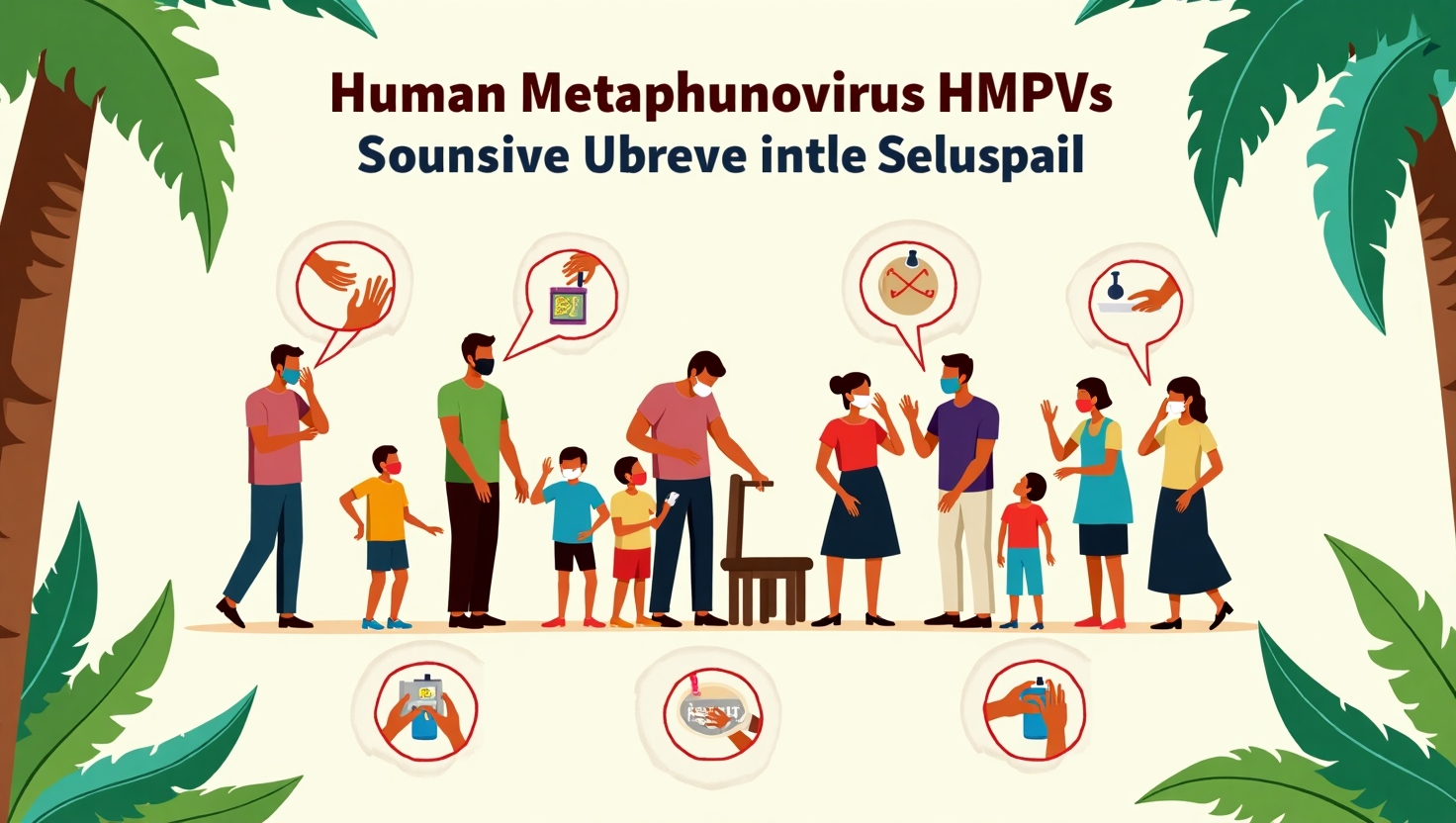
Human Metapneumovirus (HMPV) is a respiratory virus that has been gaining attention due to its ability to cause severe illnesses, particularly among vulnerable populations. In Indonesia, where respiratory infections are common, understanding the symptoms of HMPV is essential for early detection and effective management. Recognizing these symptoms can save lives and reduce the strain on the country’s healthcare system.
What is HMPV?
HMPV is a virus from the Paramyxoviridae family, closely related to respiratory syncytial virus (RSV). It spreads through respiratory droplets, direct contact with infected individuals, or touching contaminated surfaces. While it can affect people of all ages, HMPV is most dangerous for children under five, the elderly, and individuals with weakened immune systems.
Common Symptoms of HMPV
HMPV symptoms can range from mild to severe, depending on the individual’s overall health and immune response. Here are the key symptoms to watch for:
- Fever
- A persistent fever is one of the most common signs of HMPV. It often accompanies other symptoms and should not be ignored, especially in children and older adults.
- Cough
- A dry or productive cough is a hallmark of HMPV. It can escalate over time and lead to discomfort and difficulty breathing.
- Nasal Congestion
- Stuffy or runny noses are frequent symptoms, often mistaken for a common cold. However, when paired with other signs, they could indicate HMPV.
- Shortness of Breath
- Difficulty breathing or wheezing is a more severe symptom and may signal complications like bronchiolitis or pneumonia.
- Wheezing
- Wheezing, particularly in children and older adults, is a significant indicator of respiratory distress caused by HMPV.
Severe Cases
In severe cases, HMPV can lead to serious complications such as:
- Pneumonia
- Bronchiolitis
- Respiratory failure
These conditions often require hospitalization and can be life-threatening if not treated promptly.
Why Indonesians Should Be Concerned
High Prevalence of Respiratory Illnesses
Indonesia’s tropical climate and high population density make it a hotspot for respiratory infections. HMPV adds to the burden, especially during the rainy season when respiratory illnesses peak.
Vulnerable Populations
Children, the elderly, and those with pre-existing conditions are at greater risk of severe outcomes. In rural areas with limited access to healthcare, these groups face even higher vulnerability.
Low Awareness
Many Indonesians are unaware of HMPV, often mistaking it for the flu or a common cold. This lack of awareness delays diagnosis and treatment, allowing the virus to spread.
When to Seek Medical Attention
If you or a loved one experience any of the following, seek medical help immediately:
- Persistent high fever
- Difficulty breathing or wheezing
- Symptoms that worsen over time
- Lethargy or confusion in children or older adults
Prevention Tips
Preventing HMPV involves simple but effective measures:
- Practice Good Hygiene
- Wash hands regularly with soap and water.
- Avoid touching your face with unwashed hands.
- Wear Masks
- Use masks in crowded areas to reduce the risk of transmission.
- Avoid Close Contact
- Stay away from individuals showing signs of respiratory illness.
- Disinfect Surfaces
- Clean frequently touched surfaces to prevent the virus from spreading.
- Boost Immunity
- Maintain a healthy diet, get enough sleep, and stay active to strengthen your immune system.
Conclusion
HMPV is a growing health concern in Indonesia that should not be overlooked